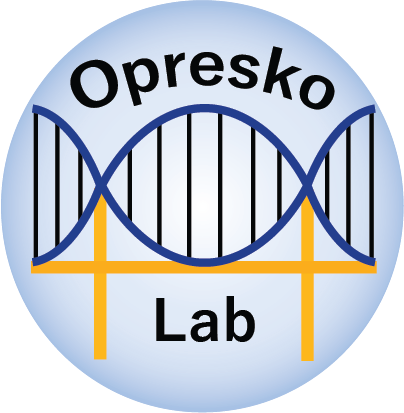Our Research
Our Mission.
Telomeres shorten naturally with age, but genetic and environmental factors can accelerate telomere loss. Critically short telomeres contribute to cancer and aging-related diseases. We aim to understand how DNA damage at telomeres impacts their function, and whether or how the damage is repaired.
Research Interests.
Telomeres are highly susceptible to damage caused by oxidative and genotoxic stress arising from free radicals, DNA damaging agents including sunlight, and inflammation. Key broad questions we are addressing:
How does oxidative and genotoxic stress accelerate telomere shortening and dysfunction?
What are the cellular pathways that preserve telomeres in the face of DNA damage?
What are the consequences of telomere damage on telomere integrity, overall genome stability, cellular function, and organism health?
Research Projects and Approach
Targeting Damage to Telomeres
Working with our collaborators, we have developed a technology to selectively induce oxidative guanine damage at telomeres with high spatial and temporal control. We are using this tool to understand how damage to telomeric DNA impacts telomere integrity, and the consequences for cellular health and function. We are adapting this flexible tool for inducing other forms of damage including bulky lesions, and to selectively damage telomeres in model organisms. We discovered that persistent telomeric 8-oxoguanine damage disrupts telomere replication and chromosomal instability in human cancer cells.
FAP peptides binds photosensitizer dye (MG) at telomeres. Red light produces 8-oxoguanine, a common form of oxidative DNA damage.
AKTA Pure FPLC system for protein purification. Schematic of telomerase mediated telomere lengthening. Products from telomerase reactions.
How DNA Damage Impacts Telomerase
We are studying how damaged and modified DNA precursors (dNTPs), and damage to the telomere itself, impact the ability of telomerase and accessory proteins to lengthen telomeres. Regenerative stem cells and 90% of cancers rely on telomerase for continued proliferation. We conduct complementary biochemistry and biophysical experiments with purified proteins to study telomerase mechanism. We found 8-oxodGTP is a telomerase chain terminator, but oxidative damage in telomeres promotes telomerase activity by disrupting G-quadruplex structures.
Pathways That Preserve Telomeres
We are studying the roles of base excision repair and nucleotide excision repair enzymes in preserving telomeres damaged from oxidative and genotoxic stress. For these studies, we are using CRISPR/Cas9 and shRNA technology to deplete repair enzymes and examine the consequences for telomere function after targeted induction of telomere damage. We are also using unbiased proteomic approaches to identify which proteins are recruited to telomeres after induction of base damage and bulky DNA lesions. The lab houses a state-of-the-art Nikon Ti-E Perfect Focus Live Cell System for visualizing protein recruitment to damage telomeres and telomere aberrations.
Schematic of base excision repair pathways at telomeres.





